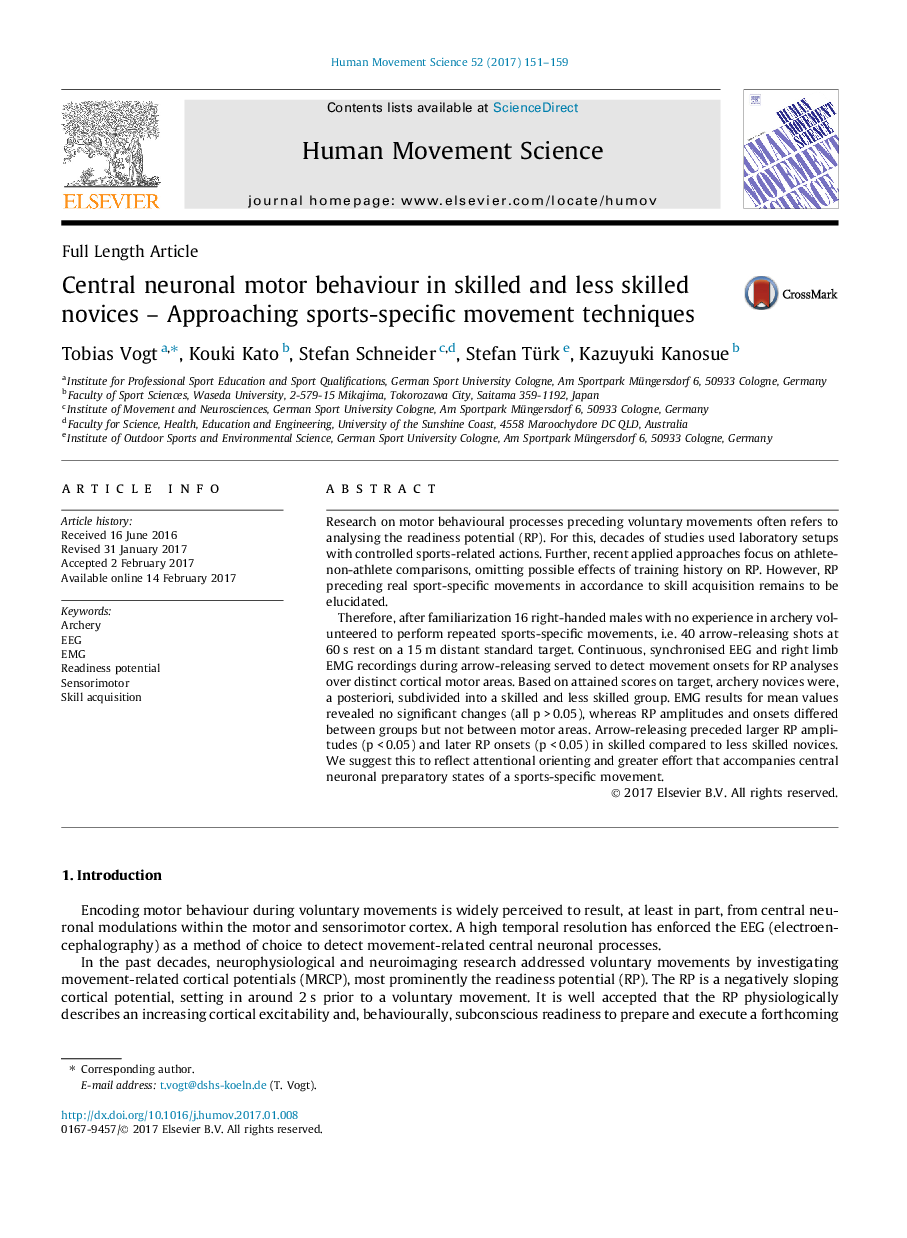| Article ID | Journal | Published Year | Pages | File Type |
|---|---|---|---|---|
| 5042064 | Human Movement Science | 2017 | 9 Pages |
â¢Time-locked EEG and EMG measures during real sports-specific movements.â¢Albeit no training history, RP amplitude and onset are skill-dependent.â¢Greater attentional orienting and effort affect central neuronal preparatory states in novices.
Research on motor behavioural processes preceding voluntary movements often refers to analysing the readiness potential (RP). For this, decades of studies used laboratory setups with controlled sports-related actions. Further, recent applied approaches focus on athlete-non-athlete comparisons, omitting possible effects of training history on RP. However, RP preceding real sport-specific movements in accordance to skill acquisition remains to be elucidated.Therefore, after familiarization 16 right-handed males with no experience in archery volunteered to perform repeated sports-specific movements, i.e. 40 arrow-releasing shots at 60 s rest on a 15 m distant standard target. Continuous, synchronised EEG and right limb EMG recordings during arrow-releasing served to detect movement onsets for RP analyses over distinct cortical motor areas. Based on attained scores on target, archery novices were, a posteriori, subdivided into a skilled and less skilled group. EMG results for mean values revealed no significant changes (all p > 0.05), whereas RP amplitudes and onsets differed between groups but not between motor areas. Arrow-releasing preceded larger RP amplitudes (p < 0.05) and later RP onsets (p < 0.05) in skilled compared to less skilled novices. We suggest this to reflect attentional orienting and greater effort that accompanies central neuronal preparatory states of a sports-specific movement.
